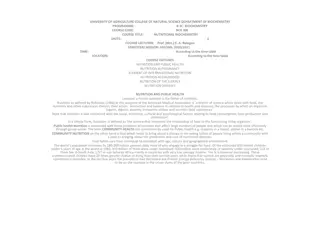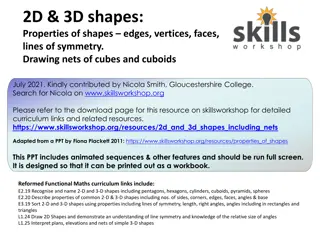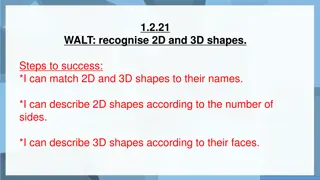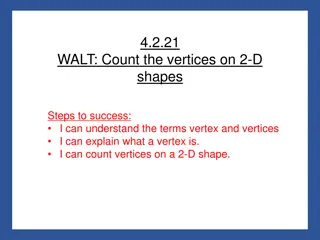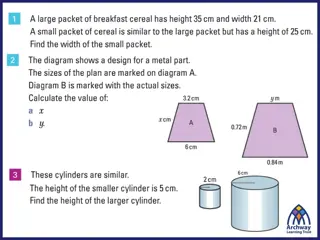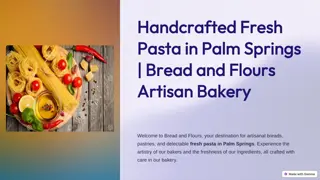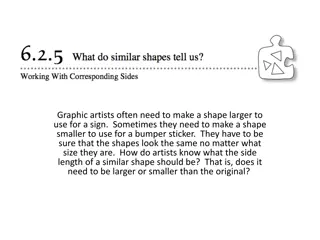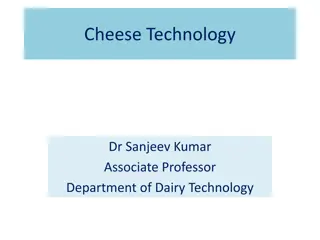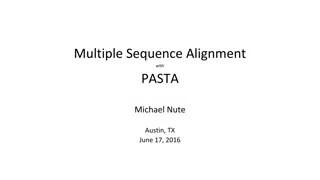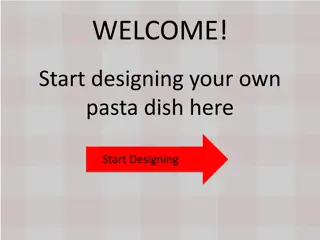Explore the World of Pasta: Shapes, Origins, and Nutritional Value
Delve into the fascinating world of pasta with this comprehensive guide covering the main pasta shapes, the intriguing origins of pasta, how to prepare fresh pasta, and the nutritional value of this beloved staple. From classic spaghetti to unique varieties like bucatini and conchiglie, discover the diversity and versatility of pasta in different cuisines. Uncover the stories behind pasta's evolution, from ancient civilizations to modern-day culinary delights, and learn how to pair pasta with delicious sauces for a truly memorable dining experience.
Download Presentation

Please find below an Image/Link to download the presentation.
The content on the website is provided AS IS for your information and personal use only. It may not be sold, licensed, or shared on other websites without obtaining consent from the author. Download presentation by click this link. If you encounter any issues during the download, it is possible that the publisher has removed the file from their server.
E N D
Presentation Transcript
Pasta LESSON 4
Learning Outcomes Be familiar with the main pasta shapes The origin of pasta How to prepare fresh pasta Select the accompanying sauces
Pasta Introduction Pasta is made from a strong wheat flour , known as durum flour , made into a dough by the addition of water , olive oil and eggs. There are two main types of pasta , dried or fresh home made . Dried pasta is available in at least 56 different shapes each of which has a name. Shelf life of dried pasta can be up to 2 years if it is correctly stored. Pasta can be found in different colors and flavors from suppliers and can be freshly produced . It is widely used in menus.
Pasta Some still argue that pasta originated from China but its origins are the same as those of cheese no one knows when, where or by whom Ancient Greeks and Romans enjoyed it In other parts of the world Pasta is normally associated with Italian Cooking
Pasta Nutritional Value Per 100 grms cooked pasta Calories 114 Protein 15% Water 72.2 % Carbohydrates 25.5 % Nitrogen 58% Vitamins B Vitamins A small amount of iron may also be present
Pasta Nutritional Value Durum wheat has a 15 % protein content which makes it a good alternative to rice and potatoes for vegetarians . Pasta also contains carbohydrates in the form of starch which gives the body energy. It is widely included in menus for those who train regularly losing a lot of energy such as Footballers
Pasta Bucatini A thick Hollow version of spaghetti Capellini Very thin , flat or round noodles Cappelletti Little Hats
Pasta Conchiglie Sea shells Shapes farfalle Farfalle Bow tie Shapes Fettuccine A blood brother of Tagliatelli , originates from Rome and is usually narrower and thicker than its relation. .
Pasta Fusilli Spiral shaped Pasta Linguini Flat thin Noodle. Macaroni Tubular Pasta Orechiette Little ears
Pasta Penne Hollow short Pasta cut at acute diagonal angle Rigatoni Ridged and tubular pasta sometimes curved but without the pointed ends of penne. Ravioli Best known as stuffed pasta
Pasta Tagliatelli Long thin egg noodles , the specialty of bologna , one of Italy's greatest food Tortellini Spaghetti Long round noodles A stuffed belly button shaped Pasta
Pasta Pappardelle A wider version of Tagliatelle. Gnocchi Pasta Shells usually Stuffed. Lasagne Flat wide Strips
http://www.foodonthefood.com/.a/6a00d83451c62869e20147e0aa4c4c970b-pihttp://www.foodonthefood.com/.a/6a00d83451c62869e20147e0aa4c4c970b-pi Pasta-Recipe Method 1 Method 2 175 gr flour 1 egg 3 egg yolks 200gr flour 2 egg 1 tbsp olive oil
Pasta Sauces Ingredients Tomato sauce Fish Cream sauce Shellfish Butter sauce Meat Rich meat sauce Offals Olive oil & garlic Herbs Soft white blue cheese Spices Pesto Vegetables Olives & capers
Pasta Cheeses used in the cooking of pasta Parmesan Ricotta The most popular hard cheese for use with pasta, ideally for grating. The flavor is best when freshly grated Creamy white in color made from discarded whey of other cheeses. It is widely used for filling of ravioli Mozzarella Pecorino Traditionally made from the milk of the water buffalo and is pure white and creamy with a mild but distinct flavor A strong ewes milk cheese sometimes studded with pepper corns mainly used for stronger flavor dishes
Pasta-Stuffed Agnolini Cappelletti Shaped like little hats and usually filled like agnolini Small half moon shaped usually filled with ham, cheese or meat Cannelloni Ravioli Are tubes of pasta filled with either cheese or meat and cooked in a bechamel Can be either round of half turned and mostly filled with ricotta
Pasta-Stuffed Raviolini Tortelloni A smaller version of ravioli normally half the size Are double the size of the tortellini and again different fillings are used Panzeroti Tortellini Half round shaped pasta may be filled with a selection of cheeses and tomatoes Filled with a variety of ingredients like cheese meats and vegetables
Pasta It is very important to cook pasta in a pot with plenty of boiling salted water and never over cook pasta. Pasta is always served al dente, serve 50 gr dry weight as starter and 100 gr dry weight for a main course
Carbonara Carbonara is an Italian pasta dish from Lazio, and more specifically Rome, based on eggs, cheese, bacon, and black pepper. Spaghetti is usually used as the pasta, however, fettuccine, rigatoni, linguine or bucatini can also be used
Matriciana Matriciana (in Romanesco dialect) is a traditional Italian pasta sauce based on guanciale (cured pork cheek), pecorino cheese, and tomato. Originating from the town of Amatrice (in the mountainous Province of Rieti
Bolognese Bolognese sauce, known in Italian as rag sauce originating from Bologna, Italy. In Italian cuisine, it is customarily used to dress "tagliatelle al rag " and to prepare "lasagne alla bolognese". In the absence of tagliatelle, it can also be used with other broad, flat pasta shapes, such as pappardelle or fettuccine, or with short tube shapes rag alla alla bolognese, is a meat-based
Lasagna Lasagne is made by interleaving layers of pasta with layers of sauce, made with rag , bechamel, and Parmigiano-Reggiano. In other regions and outside of Italy it is common to find lasagne made with ricotta or mozzarella cheese, tomato sauce, various meats (e.g., ground beef, pork or chicken), miscellaneous vegetables (e.g., spinach, zucchini, mushrooms) and typically flavored with wine, garlic, onion, and oregano. In all cases the lasagne are oven-bake




